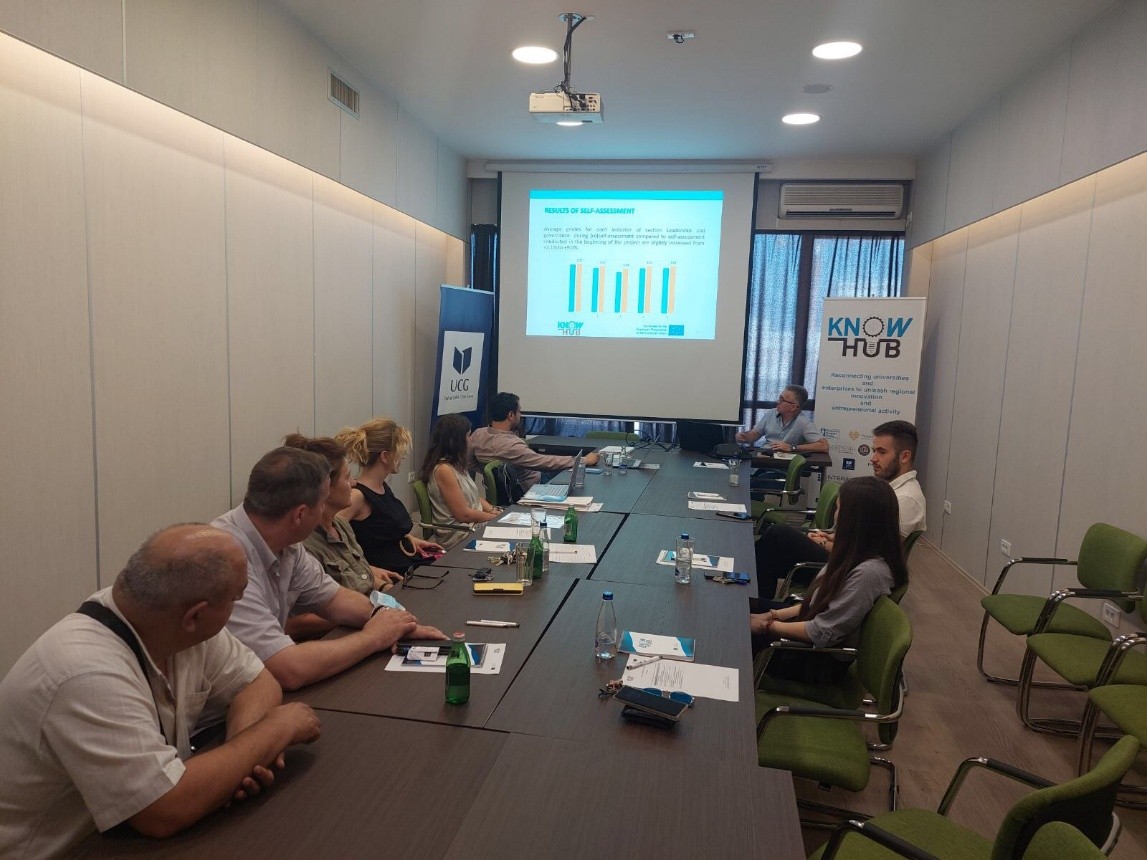By Prof. Dr Radmil Polenakovikj
Abstract: At the Faculty of Mechanical Engineering, Ss. Cyril and Methodius University in Skopje, the HEInnovate self-assessment tool has proven to be a very practical and insightful resource. It has been used both for our own institutional assessment and to support other HEIs through international projects such as EIT HEI and Erasmus+. The tool helped us evaluate our innovation and entrepreneurship capacities, improve project proposals, and support other higher education institutions in the Western Balkans to identify their capacities.
Could you share some background about your current work and responsibilities?
I am a professor at the Faculty of Mechanical Engineering in Skopje, and I’ve been teaching Entrepreneurship since 1997—when it was first introduced as a course for only one major (Industrial Engineering and Management), with about 30 students. It took years of discussions and persuasion to convince my colleagues—mostly engineers and professors from traditional mechanical engineering departments—that entrepreneurship is essential for all students. Eventually, we succeeded in making it an obligatory course for all students at our faculty in the second semester of the first year (about 200 students).
Now, with the HEInnovate approach, I just point and say, “See, this is what I’ve been saying—our university and faculty must think entrepreneurially in all aspects of their daily work.” HEInnovate gives me a strong tool to support this mindset and to convince others of the importance of innovation and entrepreneurial thinking.
How have you used the HEInnovate tool within your institution or in project work?
I’ve worked closely with the HEInnovate tool through multiple international projects, and I’ve found it to be incredibly insightful and practical. We used it for institutional self-assessment when preparing EIT HEI project applications, and it was a very effective way to assess our institution’s current capacities in innovation and entrepreneurship. We used the same HEInnovate account across different project applications, which allowed us to track our progress and compare results. The assessment was completed by our top management.
Have you supported others in using the tool as well?
Yes. In another Erasmus+ project, Know Hub - Reconnecting universities and enterprises to unleash regional innovation and entrepreneurial activity, the National Centre for Development of Innovation and Entrepreneurial Learning (NCDIEL), where I was part of the team, supported higher education institutions in the Western Balkans in using HEInnovate to assess their innovation and entrepreneurship capacities. The tool was applied in the process of establishing Commercialisation Hubs at five universities from Albania, Bosnia and Herzegovina, and Montenegro. A wide range of participants were involved in these assessments—teaching and administrative staff, students, and external stakeholders.
We followed the HEInnovate guidelines, and the process included an introductory workshop to explain how to use the tool, support during the assessment itself, and a follow-up workshop to validate and reflect on the results. My team and I provided continuous support and served as the main moderators of the verification workshops. We collected, cleaned, and analysed the data, and then facilitated workshops with representatives from different roles at each university to confirm the ratings assigned to each HEInnovate dimension.

Verification workshop for HEINNOVATE results, University of Montenegro (KnowHub project)

Verification workshop for HEINNOVATE results, European University of Tirana (KnowHub project)
What insights or outcomes emerged from using the tool?
In our own institutional use, the HEInnovate tool helped us understand where we stand in terms of innovation and entrepreneurship. It triggered discussion and helped us see both where we are strong and where we are facing gaps. In the process of guiding other HEIs, the institutions found the tool very user-friendly and useful for opening honest internal conversations. The group input function was especially appreciated, as it encouraged institutional ownership of the results and gave space to a variety of stakeholders to share their views. The thematic focus in these projects was mostly on the dimensions "Entrepreneurial Teaching and Learning," "Organisational Capacity," and "Knowledge Exchange and Collaboration."
What actions were taken as a result of these assessments?
Following the use of HEInnovate, we participated in the development of successful project applications. One of them, the EIT HEI PROMETHEUS project, was finalised in 2023, and another, the EIT HEI TECHSIGHT project, has just started. These assessments helped us understand where each partner stands, what their strengths are, and where they need support—this helped shape how we work together and organise the project activities.
Within the EIT HEI initiative, which aims to strengthen partnerships for more entrepreneurial higher education institutions, the tool proved especially useful for setting a shared vision. It helped us determine how more advanced partners could support others, identify key challenges, and highlight best practices to be shared. This vision extends beyond the project’s timeline, making HEInnovate a valuable tool for long-term strategic development.
What lessons have you learned, and what do you see for the future?
The HEInnovate tool increased awareness of entrepreneurship and innovation as institutional priorities. It strengthened the quality and relevance of our project proposals and encouraged better collaboration inside our university and with our partners. One important lesson is that the group-based, inclusive approach works very well—it allows different voices to be heard. At the same time, balancing these perspectives and reaching a shared understanding can be challenging and needs support.
Looking ahead, HEInnovate can definitely be used as a benchmarking tool. Over the past few years, we’ve conducted several assessments—mostly in the context of project proposals—but even so, we can already see changes over time.
Update July 2025: Meanwhile the Ss. Cyril and Methodius Universit in Skopje was successful in the Erasmus+ Capacity Building for Higher Education call. The project “INITIATION” (dIgital traNsformatIon and green Transition of hIgher educATion InstitutiONs) was selected for funding. Professor Radmil Polenakovikj will lead the team on this project, which is the only one from North Macedonia to be funded out of 173 projects.


